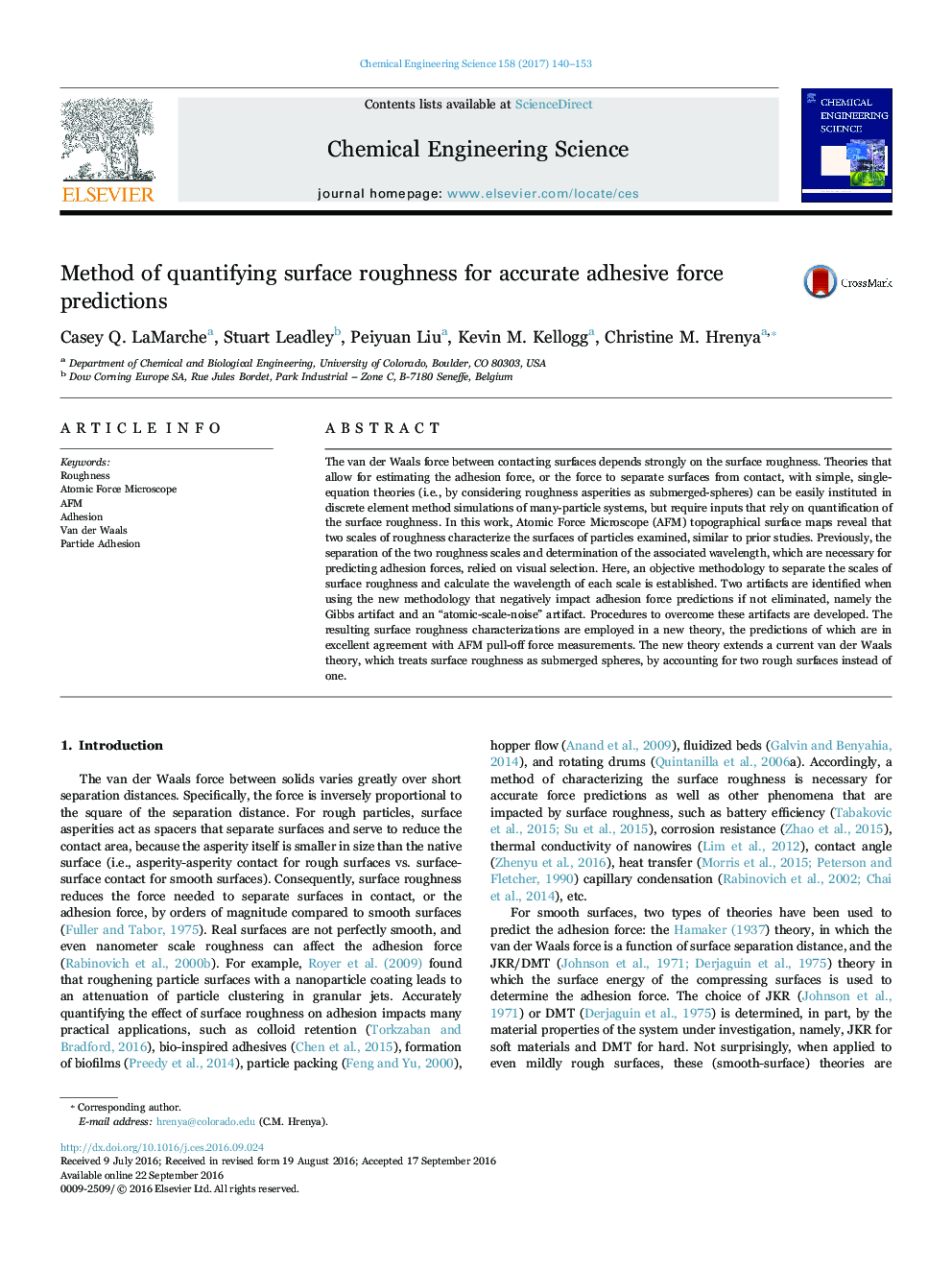| کد مقاله | کد نشریه | سال انتشار | مقاله انگلیسی | نسخه تمام متن |
|---|---|---|---|---|
| 6467893 | 1423261 | 2017 | 14 صفحه PDF | دانلود رایگان |
- The effects of surface roughness on van der Waals forces are reviewed.
- Theories for predicting adhesion forces in the presence of roughness are examined.
- Prior techniques of quantifying roughness are discussed and a new methodology is presented.
- Artifacts are discovered, which affect adhesion predictions and are removed with the new method.
- Adhesion force predictions are in good agreement with measurements after removing artifacts.
The van der Waals force between contacting surfaces depends strongly on the surface roughness. Theories that allow for estimating the adhesion force, or the force to separate surfaces from contact, with simple, single-equation theories (i.e., by considering roughness asperities as submerged-spheres) can be easily instituted in discrete element method simulations of many-particle systems, but require inputs that rely on quantification of the surface roughness. In this work, Atomic Force Microscope (AFM) topographical surface maps reveal that two scales of roughness characterize the surfaces of particles examined, similar to prior studies. Previously, the separation of the two roughness scales and determination of the associated wavelength, which are necessary for predicting adhesion forces, relied on visual selection. Here, an objective methodology to separate the scales of surface roughness and calculate the wavelength of each scale is established. Two artifacts are identified when using the new methodology that negatively impact adhesion force predictions if not eliminated, namely the Gibbs artifact and an “atomic-scale-noise” artifact. Procedures to overcome these artifacts are developed. The resulting surface roughness characterizations are employed in a new theory, the predictions of which are in excellent agreement with AFM pull-off force measurements. The new theory extends a current van der Waals theory, which treats surface roughness as submerged spheres, by accounting for two rough surfaces instead of one.
313
Journal: Chemical Engineering Science - Volume 158, 2 February 2017, Pages 140-153
